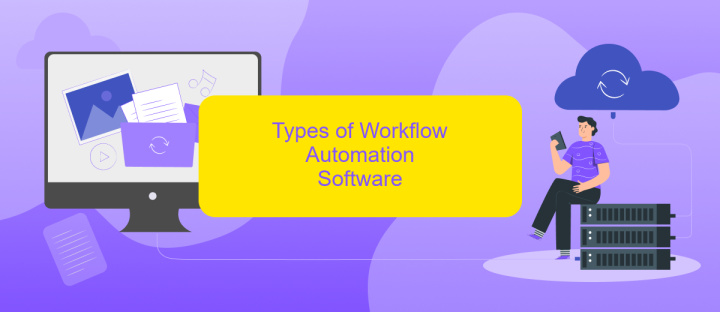Workflow Automation Software for Manufacturing
Workflow automation software for manufacturing is revolutionizing the industry by streamlining processes, reducing errors, and increasing efficiency. This technology enables manufacturers to automate repetitive tasks, manage complex workflows, and optimize resource allocation. By integrating advanced tools and real-time data analytics, companies can achieve higher productivity, better quality control, and significant cost savings, ultimately enhancing their competitive edge in the market.
Introduction
In the ever-evolving landscape of manufacturing, the need for efficient and streamlined processes is paramount. Workflow automation software has emerged as a critical tool to enhance productivity, reduce errors, and ensure seamless operations. By automating repetitive tasks, manufacturers can focus on innovation and quality improvement, driving overall business growth.
- Reduction of manual errors and increased accuracy.
- Enhanced production speed and efficiency.
- Improved resource management and cost savings.
- Better compliance with industry standards and regulations.
- Real-time monitoring and data analytics for informed decision-making.
One of the key aspects of workflow automation is the integration of various systems and tools. Services like ApiX-Drive facilitate these integrations, allowing manufacturers to connect different software applications seamlessly. This not only simplifies the automation process but also ensures that data flows smoothly across all platforms, enhancing overall operational efficiency. As manufacturing continues to embrace digital transformation, workflow automation software stands out as a pivotal component in achieving sustainable success.
Benefits of Workflow Automation for Manufacturing

Workflow automation in manufacturing brings numerous benefits, including increased efficiency and reduced operational costs. By automating repetitive tasks, manufacturers can streamline processes, minimize human error, and accelerate production timelines. This leads to higher output and improved product quality, ultimately boosting customer satisfaction and competitive advantage. Additionally, automation allows for better resource management, optimizing the use of materials and labor, which further contributes to cost savings.
Another significant advantage is the enhanced ability to integrate various systems and tools within the manufacturing process. Services like ApiX-Drive facilitate seamless integration, enabling different software and hardware to communicate and work together harmoniously. This connectivity ensures real-time data exchange, providing manufacturers with valuable insights and allowing for quicker, more informed decision-making. As a result, businesses can respond more swiftly to market demands and changes, maintaining agility and resilience in a highly dynamic industry.
Types of Workflow Automation Software

Workflow automation software for manufacturing can be categorized based on their functionalities, integration capabilities, and specific use cases. These tools streamline various processes, enhance productivity, and ensure better resource management.
- Task Management Tools: These tools help in assigning, tracking, and managing tasks within the manufacturing process. They ensure that every team member knows their responsibilities and deadlines.
- Process Automation Software: This category includes software that automates repetitive tasks, such as data entry, scheduling, and inventory management. It reduces manual errors and saves time.
- Integration Platforms: Tools like ApiX-Drive facilitate seamless integration between different software systems used in manufacturing. They allow for real-time data exchange, enabling better decision-making and process efficiency.
- Quality Control Systems: These systems automate quality checks and ensure that the manufacturing processes meet the required standards. They help in identifying defects early and maintaining product quality.
By leveraging these types of workflow automation software, manufacturing companies can optimize their operations, reduce costs, and improve overall efficiency. Choosing the right tool depends on the specific needs and goals of the organization.
Implementation of Workflow Automation Software

Implementing workflow automation software in manufacturing involves multiple steps that ensure seamless integration and optimal performance. The first step is to conduct a thorough assessment of the existing processes to identify areas that can benefit from automation. This assessment helps in understanding the specific needs and the potential impact of automation on productivity and efficiency.
Once the assessment is complete, the next step is to select the appropriate workflow automation software that aligns with the identified needs. This involves evaluating different software options based on their features, scalability, and ease of integration with existing systems. One such tool that can facilitate seamless integration is ApiX-Drive, which allows for easy connection between various applications and systems without requiring extensive coding knowledge.
- Conduct a comprehensive assessment of current processes.
- Select suitable workflow automation software.
- Utilize integration tools like ApiX-Drive for seamless connectivity.
- Train employees on the new system.
- Monitor and optimize the automated workflows regularly.
After selecting the software and integrating it using tools like ApiX-Drive, it is crucial to train the employees to ensure they are comfortable with the new system. Continuous monitoring and optimization of the automated workflows are essential to maintain efficiency and address any issues that may arise. By following these steps, manufacturers can successfully implement workflow automation software to enhance their operations.


Conclusion
In conclusion, implementing workflow automation software in manufacturing processes significantly enhances productivity, reduces human error, and optimizes resource allocation. By automating repetitive tasks, manufacturers can focus on more strategic activities that drive innovation and competitiveness. The integration of such software ensures smoother operations, real-time monitoring, and better decision-making capabilities.
Furthermore, leveraging integration services like ApiX-Drive can streamline the setup of these automation tools, offering seamless connectivity between various systems and applications. This not only simplifies the implementation process but also ensures that all components work harmoniously together, maximizing the benefits of automation. As the manufacturing industry continues to evolve, embracing workflow automation and effective integration solutions will be key to staying ahead in a rapidly changing market landscape.
FAQ
What is workflow automation software for manufacturing?
How can workflow automation software improve manufacturing efficiency?
What types of tasks can be automated in a manufacturing workflow?
Is it difficult to integrate workflow automation software with existing systems?
What are the benefits of using ApiX-Drive for workflow automation in manufacturing?
Apix-Drive is a universal tool that will quickly streamline any workflow, freeing you from routine and possible financial losses. Try ApiX-Drive in action and see how useful it is for you personally. In the meantime, when you are setting up connections between systems, think about where you are investing your free time, because now you will have much more of it.

